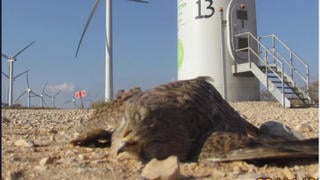
Did a Black American family produce cars 100 years before Henry Ford launched his automobile company? No, that's not true: While an escaped slave and his son owned a horse carriage manufacturing business before the invention of automobiles, their company did not produce cars until 1915, two decades after Ford built his first car and seven years after he launched his revolutionary Model T. While the accomplishments of Charles R. Patterson and his son F.D. Patterson are noteworthy in American history, their story is exaggerated and distorted by an article published by LibertyWritersAfrican.com on October 1, 2019,
The article titled "Meet The Black Family Who Produced Cars For 100 Years Before Henry Ford" (archived here) opened:
The advancement of Black people in the field of science and technology has been hidden for centuries. The curriculums used in teaching in African schools was manipulated and created in a way to make sure that the African child, man/woman, does not learn about the technological greatness of his/her ancestors, and even those present.
When it comes to the field of automobile manufacturing, many people in the world believe that Henry Ford is the father and pioneer. They were not taught that a company owned by a formerly enslaved Black man, named Charles Richard Patterson, from Ohio, in America, manufactured automobiles before Henry Ford
Users on social media only saw this title, description and thumbnail:
Meet The Black Family Who Produced Cars For 100 Years Before Henry Ford
The advancement of Black people in the field of science and technology has been hidden for centuries. The curriculums used in teaching in African schools was ma
This false version of the Patterson family is correct in drawing attention to their accomplishments, but the writer misses on the facts. A true account of their story can be found at the African American Registry website:
Born on a Virginia plantation, Charles R. "Rich" Patterson was the son of Charles and Nancy Patterson. He gained his freedom by crossing the Allegheny Mountains, hiking through West Virginia, and crossing the Ohio River to reach Greenfield, OH, a station on the Underground Railroad. There, Patterson worked for the Dines and Simpson Carriage and Coach Makers Company. Later, in partnership with J.P. Lowe, he formed a company that became known for its expertly crafted horse-drawn carriages; soon he had bought out his partner and formed the highly successful C.R. Patterson and Sons Carriage Company.
Charles R. Patterson was awarded patents for the following devices: a trill coupling (#364,849) in 1887; a furniture caster (#452,940) in 1891; a vehicle dash (#803,356) in 1905. Clay Gordon patented a buggy top (#983,992) that was assigned to C.R. Patterson & Sons Co. (a co-partnership) in 1911 and Homer C. Reed patented a combination ladder that was assigned to F.D. Patterson in 1910. After Charles Patterson's death in 1910, his eldest son took over the family business. Noticing more and more of the "funny-looking horseless" carriages on the road, he reported to the company's board, "In 1902 there was one car to 65,000 people, and by 1909 there was one vehicle for every 800 people...I believe it's time for us to build a Patterson horseless carriage." On September 23, 1915, young Patterson saw his dream roll off the assembly line-an awkward-looking two-door coupe.
C.R. Patterson and Sons could not compete, however, with Henry Ford, on his way to becoming one of the world's largest automobile manufacturers. In 1939, the company closed its big wooden doors. Most believe that C.R. Patterson would have been saddened, but very proud to know that his name on a product still meant the highest quality.
We wrote about libertywritersafrica.com before, here are our most recent articles that mention the site:















